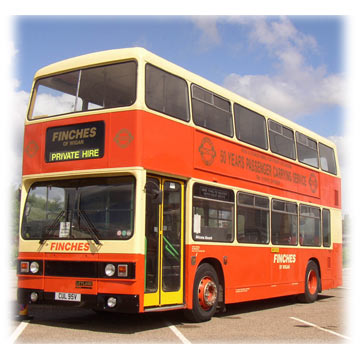How To Watch Non-League Football
A beginners' guide to the game outside the 92 league clubs (Page 2)
Contents:
(Continued from previous page)
- St George's Lane, Worcester City: Go to this ground while you've got chance (Worcester City are looking at moving to a new ground, probably devoid of character). This is a venue stuck in a lovable timewarp with a real stanchioned main stand with wooden seats, and a covered cowshed terrace on the opposite side. Oh, and male visitors can relieve themselves in a toilet under a floodlight pylon. Really;
- Stonebridge Road, Ebbsfleet United: Another ground in a lovable timewarp, though in an industrial setting;
- Westfield Lane, Frickley Athletic: One of the most exposed grounds in non league (and along with Seel Park, Mossley) the coldest. The main stand, reroofed in 1991 was built in 1926 by unemployed miners;
- Seel Park, Mossley: As cold as Frickley Athletic, though with fewer seats, more concrete terracing and good pies. An atmospheric ground with excellent views of the Pennine foothills;
- The Giant Axe, Lancaster: So called after the original shape of the ground caused by the running track which surrounded this ground till the 1970s. Very good social club and views of Lancaster Castle railway station (a must visit for non league football loving trainspotters);
- Rossett Park, Marine: A three sided ground shoehorned between terraced houses. Well worth visiting for its narrow side terrace and social club complex;
- Wellesley Recreation Ground, Great Yarmouth Town: An atmospheric ground with one of the oldest (sadly disused) main stands in non league football;
- Lambeth Grove, Woodley Sports: Till recently, this ground boasted the only plastic pitch in senior football (Durham City FC have since acquired one in recent years). Good food and a good ground for a club established less than 40 years ago.
The grounds listed above are the ones I have actually visited.
Choosing your non league side
For several people, it is always easy to back a successful side, whether they won the FA Premier League or the Manchester League. However, it takes some gumption to choose an underachieving local side, because they are nearer home than nearer to the Champions League.
A good idea is to go to a handful of non league games within a short distance from home. Then decide which team you would like to adopt. From past experience, I went to see the other Tameside teams besides Stalybridge Celtic, and the 'Bridge became my adopted team, due to the atmosphere at Bower Fold and the fans.
The ideal local club must be at least an hour or less away by inland public transport.
Cup Competitions
Anyone who supports a league side will be familiar with the FA Cup, one of the best footballing competitions in the world. Before the first round proper, there are numerous qualifying rounds. Usually, the preliminary round and the qualifying rounds start from August and run till the final Saturday in October. The First Round usually takes place in the middle of November, the point when the national press take interest, in the hope that Blyth Spartans (or other non league side) had beaten Wrexham or any other league team.
As well as the FA Challenge Cup (to give it its full name) there is also the FA Trophy, the FA Vase, FA Sunday Cup and the FA Youth Cup.
The FA Trophy was first competed in 1968 - 69, with Macclesfield Town the first winners. This competition focuses on the more senior non league sides, those which would make up the three Conference leagues and its feeders.
In the early 1970's, when the distinction between amateur and professional teams were broken, the former FA Amateur Cup became the FA Vase. The FA Vase focuses on the non league sides within regional feeder leagues such as the North West Counties League and the Northern League.
The finals of all national FA competitions are played at Wembley, with the 2006 - 07 season being the first season at the new Wembley stadium. In the five years during its redevelopment, Barclays Premier League grounds had been chosen. The 2005 - 06 season saw the FA Vase final tie contested at St. Andrews (Birmingham City) with the FA Trophy final being held at the Boleyn Ground, Upton Park (West Ham United). The Sunday Cup final was played at Anfield (Liverpool).
League Competitions
Non league football is made up of several leagues forming a Pyramid system. The first steps towards the pyramid system were made with the formation of the Alliance Premier League in 1979 (today's Blue Square Premier league). This is fed by teams from the Conference North and Conference South (Blue Square North and Blue Square South). Promotion is gained on winning one of the leagues or a play-off final. This in turn is fed by regional leagues, like the Northern Premier League, the Southern League and the Isthmian League (London and South East clubs).
Each senior regional league is fed by clubs from more regional leagues, such as the United Counties League and the West Midlands Regional League. These are fed by lesser regional leagues for greater locality (i.e. the Manchester League).
One exception to this rule is the Northern League. A majority of clubs within this league have opted out of the Pyramid system, due to excessive travel times and costs. A small number have left the Northern League in the last twenty years to join the Pyramid system, albeit with mixed success. One example is Whitby Town. However, the most high profile team to have moved from this league has gone on to greater things in Scotland. This team is Gretna, who till recently played in the Scottish Premier League, and the UEFA Cup, after finishing runners up to Heart of Midlothian in the Scottish League Cup.
Next page: The Ethical Approach to Watching Non League Football
